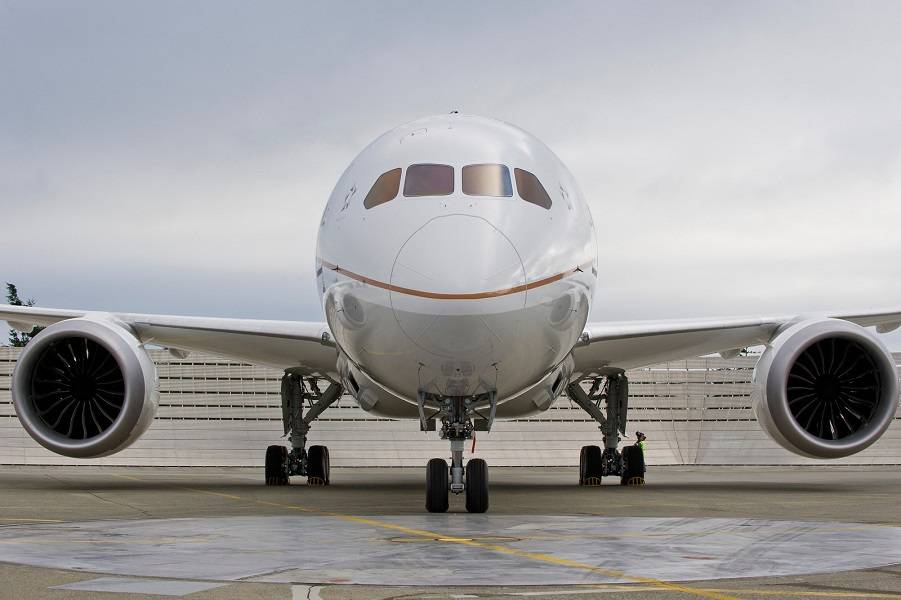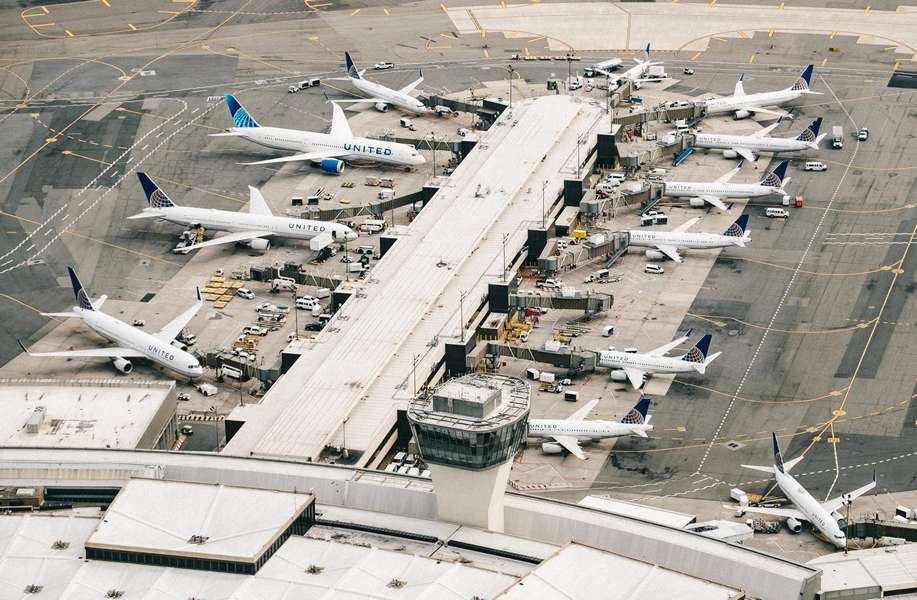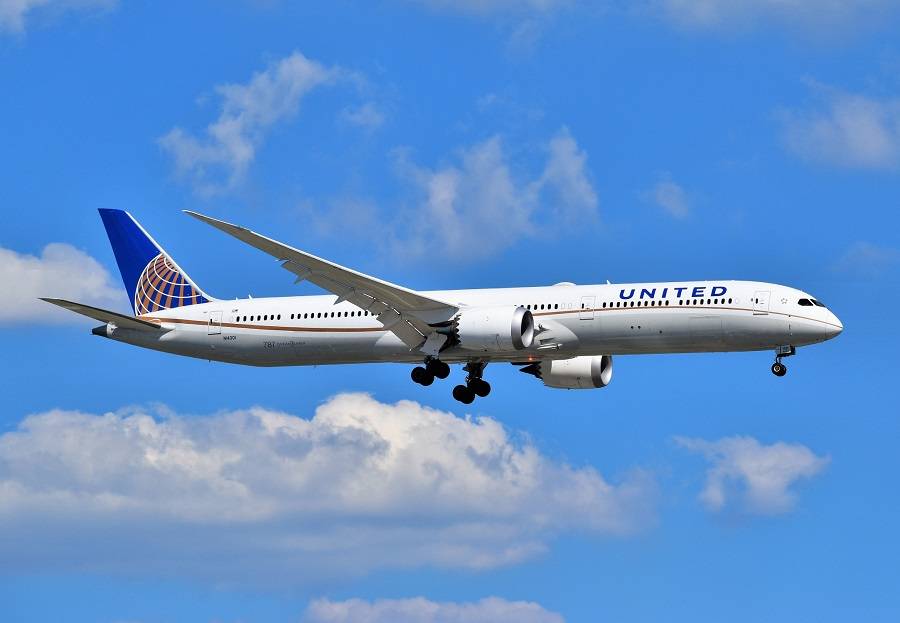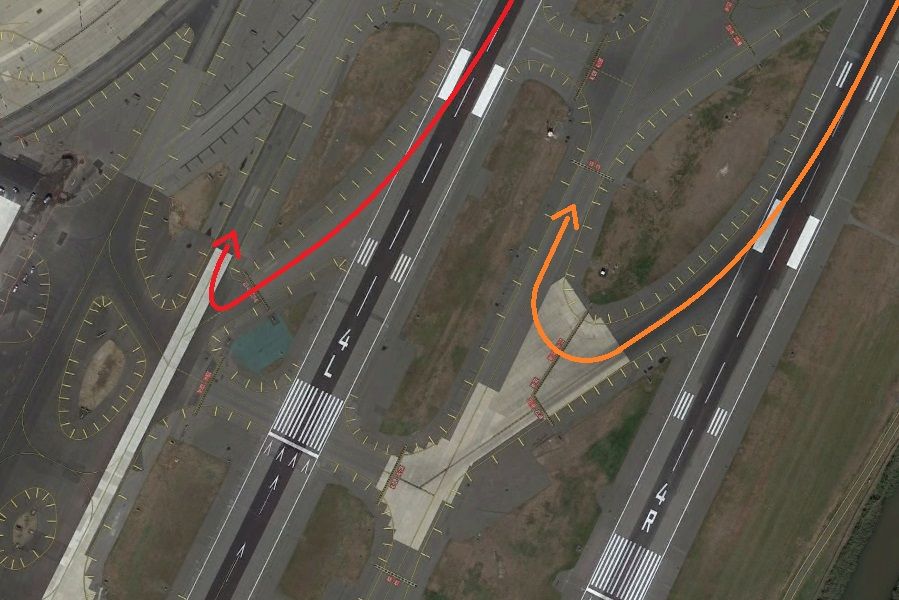A United 787-10 crew had a ground incident in Newark, striking a number of taxiway lights. The mishap involved a mix of unusual circumstances.
The incident happened on the 11th of August, just after the 787-10 landed. The United crew were just wrapping up flight UA-85. The flight started in Tel Aviv Ben Gurion Airport (LLBG), Israel, landing at Newark Liberty International (KEWR), USA. After an uneventful trip, the crew landed at runway 22R, then used a high-speed exit, near the runway’s end.

The incident came as the 787-10 crew negotiated the next turn. This was between the turn-off (B4) and the taxiway that is parallel to the runway (B). It appears that the aircraft struck a number of taxiway lights, as it took this turn. The pilots continued taxiing, getting to their gate as planned. But another aircraft crew notified Ground that there was damage to taxiway lights, at that turn.
787-10 Incident – Aftermath
The Ground controller then alerted the United crew, telling them to check their right main gear for possible damage. The FAA subsequently rated this occurrence an incident, adding that the damage to the 787-10 is unknown. The aircraft (N14011, first flight December 2019) returned to service about 28 hours later. It is likely that this was its next scheduled flight, anyway. The airport reportedly repaired the taxiway lights immediately.

The turn that the 224ft/68.3m-long 787-10 took in this incident was exceptionally tight. United has all three versions of the Dreamliner (787-8, 787-9 and 787-10) in its fleet. So it’s entirely plausible that a pilot would fly the shortest variant on one day, and the longer one the next. 787-10 aircraft reportedly have a placard next to the tiller (nose-wheel control), to help pilots avoid mishaps like this incident.
But there is more to this incident than a momentary lapse, regarding the length and turn radius of the 787-10. That turn was tight enough that most widebodies would struggle to negotiate it. And the point here is that under normal operations, aircraft would not have to negotiate this turn at all. Because 22R is NOT the normal runway for landings, in Newark.

A Runway Change With Less Obvious Implications
Typically, aircraft would use runway 22L/4R for landings into Newark airport. However, authorities have closed this runway for refurbishment, starting in July. This project will last for many months and cost $84 million. The runway will remain completely out of use until October, and won’t be completely ready until well into 2022.
In this incident, the 787-10 crew used the last high-speed exit in runway 22R. Their path is shown in red, in the picture below. Had they landed normally at 22L and used the last high-speed exit there, they would have followed the orange line. The angles between these two turns might be very similar, but their sharpness (or radii) are worlds apart. So, changing runways and using exits in the same place along the runway, is not as straightforward as it first seems.

It is NOT clear at this time if ATC instructed the United crew in the 787-10 to use turn-off B4. Something else worth noting about this incident is that the 787-10 doesn’t have cameras to aide pilots, while taxiing. To put this in perspective, Boeing’s 777-300ER that has such cameras, is 18 feet (5.5m) longer than this Dreamliner.
The reduction of traffic in the pandemic and the subsequent ramp-up, seems to have increased the number of ground mishaps. But this incident here appears to be more than just a lapse of concentration by the 787-10 crew. And while the pilots should be vigilant in such cases, it will be interesting to see if the FAA or the New York – New Jersey airport authorities institute any changes, to keep this from happening again.



